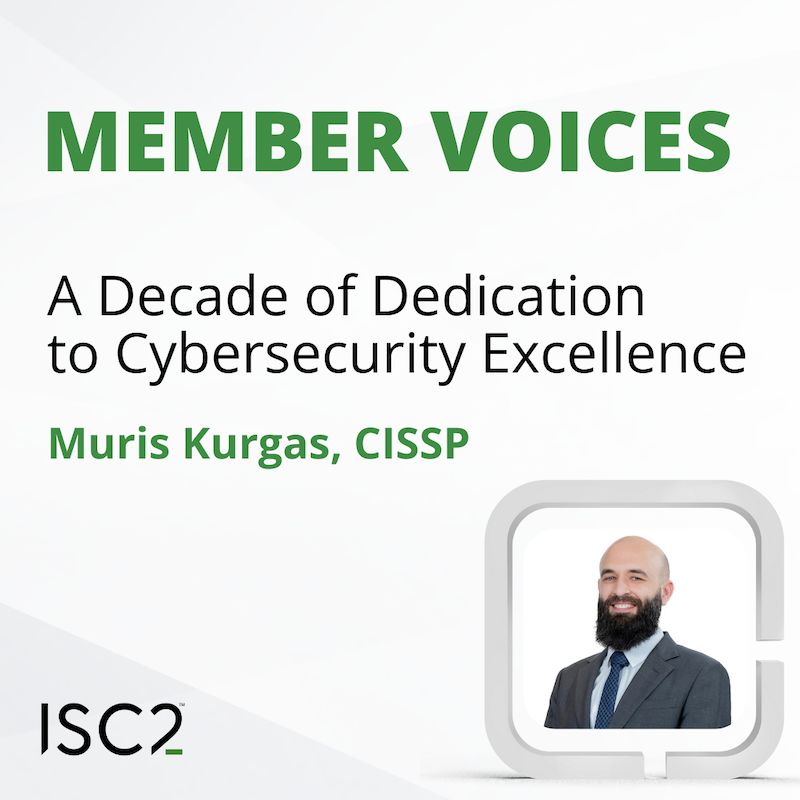Amey Thatte, CISSP discusses the need for effective inclusion and participation from leadership in strategy and decision-making, to improve understanding of the value cybersecurity brings to an organization.
 As a kid, when I learned to ride a bicycle, I realized that it provided me
with a variety of benefits: a mode of faster transportation, a means to
exercise and occasionally earn a reward for being a good kid as my family’s
courier. However, it was me, the rider, who was in charge of making
decisions such as how to navigate, at what speed, when to speed up, when to
slow down and how to avoid obstacles.
As a kid, when I learned to ride a bicycle, I realized that it provided me
with a variety of benefits: a mode of faster transportation, a means to
exercise and occasionally earn a reward for being a good kid as my family’s
courier. However, it was me, the rider, who was in charge of making
decisions such as how to navigate, at what speed, when to speed up, when to
slow down and how to avoid obstacles.
In the same way a bicycle requires a capable rider to navigate challenges effectively and control the device, organizations must adeptly manage and operate the technologies they deploy. While technology offers enhanced capabilities and opportunities for innovation, it also introduces significant risks that must be strategically managed by organization leaders, not just IT departments. Based on my experience, there is a need to build a case for why organizations must elevate their approach to cybersecurity, treating it as a strategic concern at the board and C-suite levels.
Technology as a Strategic Tool
Technology significantly empowers organizations to differentiate and outperform competitors. As noted by the academic Michael Porter, organizations require a tailored set of activities to create a unique and valuable position in market and set themselves apart from competitors to sustain the advantage resulting from such activities. Technology can enable organizations to accomplish it. Strategic use of technology, from manufacturing to retail, highlights its role as a crucial driver of competitive advantage. For instance, automakers like Tesla have shifted focus from mechanical to software capabilities with technology becoming central to their market differentiation. Similarly, John Deere's use of IoT technology enhances its agricultural machinery and offers customers valuable digital experiences and operational efficiencies. On the retail front, Walmart's investment in e-commerce to compete with Amazon illustrates the strategic necessity of robust technology infrastructure in today’s market landscape.
Today, with organizations invariably fast-paced and part of digitally-driven ecosystem, the integration of advanced technologies such as artificial intelligence (AI), big data analytics, and cloud computing allows companies to streamline operations, reduce costs and optimize decision-making processes. For example, the adoption of AI in supply chain management enables organizations to predict demand more accurately, optimize inventory levels, and reduce delivery times, which can significantly enhance customer satisfaction and competitive edge.
Nature of Technology Risks
As organizations integrate sophisticated technologies into their core operations, they encounter various risks, ranging from cyber threats to compliance issues, that can impact their operational and strategic landscape. Cybersecurity risks, such as data breaches, can lead to substantial financial and reputational damage. Operational risks involve system failures that can disrupt organizational activities, while strategic risks may arise from poor technology investments. Additionally, compliance risks, like those related to GDPR or HIPAA, can result in significant penalties.
In this complex and constantly evolving risk landscape, managing them is not only about prevention but also about preparation and response to ensure that organizations can quickly adapt and recover, thereby maintaining operational continuity. The ability to proactively address these technological risks is not just an operational necessity, but a crucial strategic element that can determine the long-term success and sustainability of an organization.
Responsibilities of Organizations in Risk Management
Effective risk management is essential for the sustainability of an organization and the value it delivers to its stakeholders. It requires a comprehensive and adaptive approach that extends beyond the IT department to include the entire leadership team. This ensures that risk management is integrated into all aspects of operations and strategic planning.
The process begins with the identification of potential risks, such as cybersecurity threats, operational disruptions and compliance breaches, using advanced analytics to predict and model these scenarios. Once potential risks are identified, they need to be assessed in terms of their impact and likelihood. This assessment helps organizations prioritize risks based on their potential to disrupt critical operational functions.
Subsequently, organizations can develop response strategies tailored to each risk's severity and manageability. Strategies may include risk acceptance, avoidance, mitigation, or transfer. For instance, while compliance risks might be mitigated through the implementation of new policies, some operational risks may be accepted if the potential benefits outweigh the costs of controls. To cite a case in point, the decision to deploy an AI-powered system for processing transactions must weigh potential benefits against the risks of data breaches or operational failures.
After developing risk response strategies, these are implemented and continuously monitored to assess their effectiveness. This ongoing monitoring ensures that the organization can adapt to new information or changes in the external environment. It's crucial that the implemented strategies are dynamic and flexible to accommodate changes and new challenges that may arise.
As the organizational and technological landscapes evolve, the risk management strategies should too. Regular reviews and updates of these strategies are necessary, based on lessons learned from past incidents. This continuous improvement approach helps organizations stay ahead of new risks and ensures that they maintain resilience and adaptability in their risk management practices, fostering an environment that supports sustained growth and stability.
Elevating Technology Risk Management to the Board and C-Suite
In today's digital landscape, cybersecurity must be a top priority for every organization. It must require direct oversight from the board and C-suite executives. This strategic elevation ensures that cybersecurity risk considerations are integrated into broader organizational decisions and risk management frameworks. Treating it as a tactical issue would ultimately result in a negative spiral where the company finds itself needing to keep spending on resources without achieving enough maturity to manage risks effectively. Such a situation is of course detrimental for profitability. However, aligning security strategies with organizational objectives and treating cybersecurity as a board-level issue would help organizations to improve their corporate governance.
Just as a skilled bicyclist uses judgment to navigate paths and obstacles, organizations also need to strategically manage the technology they deploy. By elevating cybersecurity to a strategic level within the corporate governance structure, they can better safeguard their operations and leverage technology for competitive advantage. The dual mandate of managing technology and risk necessitates a collaborative approach and ensures that top executives are not only aware of the technological capabilities but also the associated risks. Such an approach elevates cybersecurity from being purely a cost center to an investment to enable a better future.
Amey Thatte, CISSP, has 10 years of experience in cybersecurity strategy, operations, and risk management. He has held technical and operational roles, with responsibility for delivering cybersecurity strategy initiatives, risk assessment engagements and remediation projects. His cybersecurity work spans across Generative AI, cloud, infrastructure and endpoint security.
- Read more on supply chain considerations in the ISC2 task force report Information Sharing in Cyber Supply Chain Risk Management – A New Model
- ISC2 Insights Article: The Real-World Impact of AI on Cybersecurity Professionals
- ISC2 has an on-going program of in-person and live virtual AI workshop experiences, providing members with the essential working knowledge needed to develop their AI skill set


